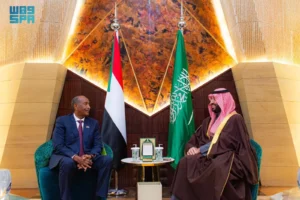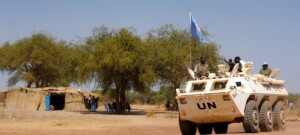Ethiopia, Egypt, Sudan sign ‘historic’ accord on Renaissance Dam
On Tuesday, Ethiopia, Egypt, and Sudan signed a document including several agreements on the Grand Renaissance Dam being constructed at the source of the Blue Nile in Ethiopia.
The Ministers of Irrigation and Foreign Affairs of the three countries signed the accord after two days of deliberations in the Sudanese capital.
At a joint press conference in Khartoum on Tuesday, Sudan’s FA Minister Ibrahim Ghandour described the document as ‘historic’.
On Tuesday, Ethiopia, Egypt, and Sudan signed a document including several agreements on the Grand Renaissance Dam being constructed at the source of the Blue Nile in Ethiopia.
The Ministers of Irrigation and Foreign Affairs of the three countries signed the accord after two days of deliberations in the Sudanese capital.
At a joint press conference in Khartoum on Tuesday, Sudan’s FA Minister Ibrahim Ghandour described the document as ‘historic’.
Ghandour announced that the three parties reached an agreement on the consultancy firms that will conduct technical studies on the mega-power project, noting that the French Artelia and BRL groups have been selected to undertake the dam impact studies.
His Ethiopian counterpart, Tedros Adhanom Ghebreyesus, said that Sudan and Egypt are invited to visit the dam. “We have nothing to hide, they [Egypt and Sudan] should inspect the dam site and this would promote [our] partnership and build trust. We also extend the invitation to the public diplomacy and the media [in Sudan and Egypt] to visit the [renaissance] dam”, he said.
Egypt’s FA Minister Samih Shoukri stated that all the Egyptian and Sudanese concerns regarding water security and quota have been addressed in the document.
Egypt is concerned that the dam could reduce its quota of 55.5 billion cubic meters of the Nile water, while the Ethiopian side maintains that the dam is primarily built to produce electricity and will not harm Sudan and Egypt.
Africa’s largest
In 2013, Ethiopia began diverting the Blue Nile to build the 6,000 MW dam which, with a capacity of 74 billion cubic metres, will be Africa’s largest when completed in 2017. The costs of the construction of the 1,780-metre-long and 145-metre high dam have been estimated at $4.2 billion.
From the start, Cairo strongly protested the construction of the dam. It is concerned that the dam could reduce its quota of 55.5 billion cubic meters of the Nile water, further increasing its water shortages. Ethiopia however maintains that the dam is primarily built to produce electricity and will not harm Sudan and Egypt.
In March, the three riparian states signed a declaration of principles on the dam project that tacitly approved the construction of the dam but called for technical studies aimed at safeguarding the water quotas.
In September last year, a panel of experts proposed a research into the effect of the project on Sudan and Egypt’s water quota, and another into the dam’s ecological, economic and social impacts on the two countries.
A new round of talks is scheduled in the first week of February, aimed at accomplishing confidence building measures between the three countries.
(Sudan Tribune, Sudan Vision Daily)











 and then
and then